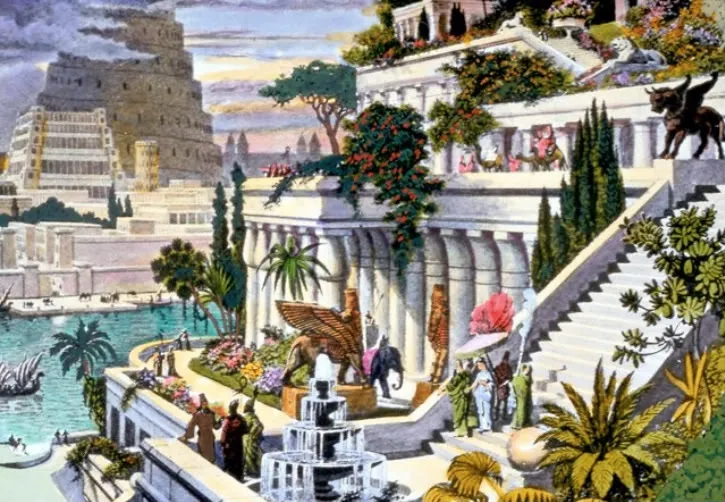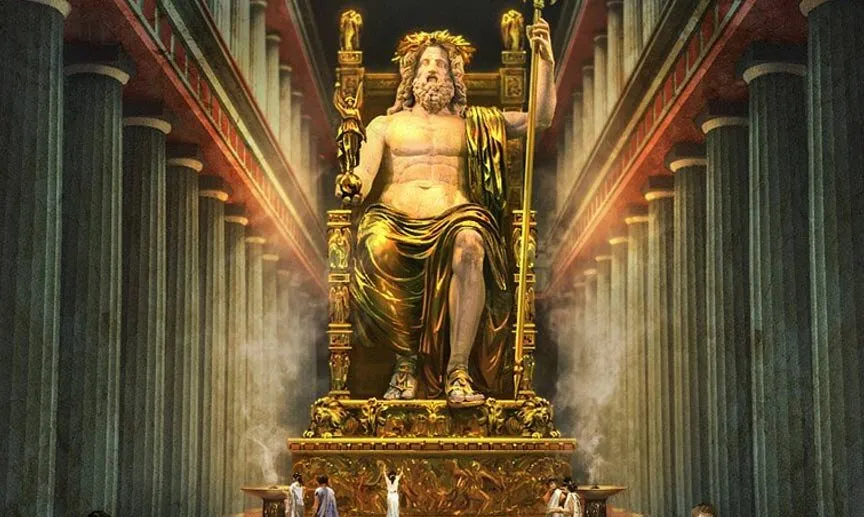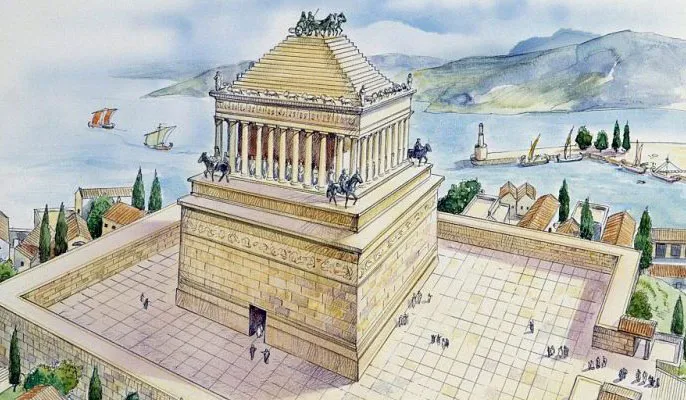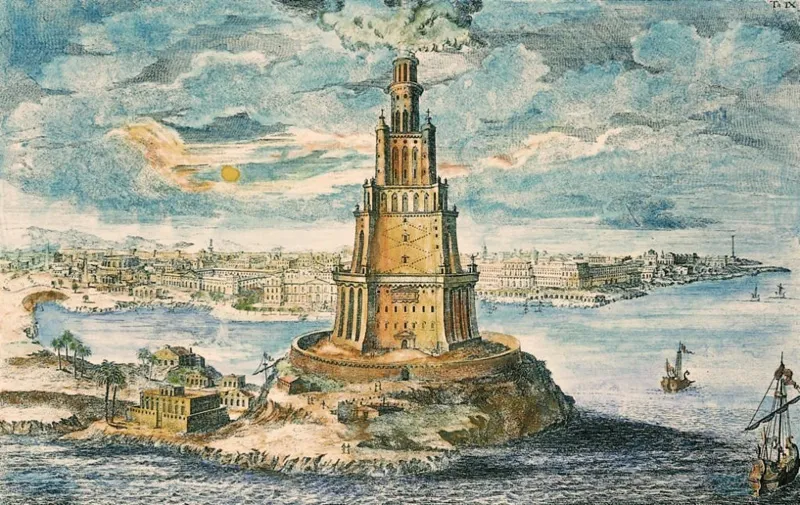You’ve probably heard about the Seven Wonders of the World. From the pyramids in Egypt to the Hanging Gardens of Babylon, it feels like the stories of the Seven Wonders have accompanied us since forever.
But what are the other wonders? The answer can be found in ancient Greek history. The “wonders of the world” is a concept that is not modern at all. It dates back to the 5th century BC when Herodotus admired the amazing art and architecture masterpieces created by the Persians and the Greeks.
Historians believe it wasn’t until the 2nd century BC, when Antipater of Sidon, an ancient Greek poet, made the first draft of a list of wonders. In fact, this list was used as a guidebook during ancient traveling.
During the Middle Ages, the list was condensed into the seven most breathtaking man-made sites from the Ancient World. And that’s the list we still use today. Currently, only one of the original Seven Wonders remains standing, we don’t know for how long, though. There’s no doubt the concept of the world’s wonders still fascinates us as it has done for centuries. Let’s check them out.
The Hanging Gardens Of Babylon

The Hanging Gardens of Babylon is one of the Seven Wonders of the Ancient World that Historians doubt ever existed. It was presumably located in the city of Babylon (around 50 miles south of current Baghdad) and it was supposedly the centerpiece of Babylon. But why do historians believe it might have never existed? Because the historical records of Babylon don’t make reference to these wondrous gardens.
All we know about the Hanging Gardens have been passed on orally. The story goes that King Nebuchadnezzar II, who ruled in the 7th century BC, constructed the hanging gardens to recreate his wife’s mountain landscape homeland Medina.
The Statue Of Zeus At Olympia

Located inside the Temple at Olympia (west coast of modern Greece), the Statue of Zeus was 40 ft (12 meters) tall and was made out of ivory and gold. The statue was built by the Greek Greek sculptor Pheidias around 435 B.C. The sculpture was made to honor Zeus during the first Olympic games. Historians believe the sculpture stayed in the sanctuary for over 800 years, however, there are doubts on how and when the sculpture was destroyed.
Some believe it was destroyed during a fire produced within the temple in the 5th century. Others accept that the sculpture was moved from the sanctuary to a royal residence in Constantinople, where it was destroyed by a fire around the year 462. The mystery of how it perished remains, though.
The Temple Of Artemis At Ephesus

The Temple of Artemis was constructed around the year 550 B.C. by the architect Cherisphron in Ephesus (current Turkey). It was built to honor Artemis, the Greek goddess of hunting and fertility. The marble structure was surrounded by 127 Ionic columns of 60 ft (18 meters) high. And that wasn’t all, the exterior of the sanctuary was embellished with bronze sculptures that served as a marketplace for people to exchange their products.
Unfortunately, on 21 July, 256 BC, on the evening of Alexander the Great’s birthday, Herostratus, a Greek pyromaniac, burned the temple to the ground. He wanted to be immortal. And in some way, he achieved it. After his acts, there was a damnatio memoriae law created which stated that it was forbidden to mention his name, orally or written. Nonetheless, the temple was reconstructed on the same site; it was also destroyed by the Goths in the year 262.
The Mausoleum At Halicarnassus

The Mausoleum at Halicarnassus was situated close to the current city of Bodrum in Turkey. It was built in 35 BC as the burial chamber for the Persian King Mausollos of Caria. The Mausoleum was known for its dazzling magnificence and for its gigantic size. It measured around 1,2000 sq ft (111 sq meters) and an absolute height of 140 ft (42 meters).
The whole chamber and the sarcophagus were made out of white alabaster and embellished with gold, surrounded by Ionic columns. This is the reason the visitors weren’t necessarily amazed by the Mausoleum’s size but dazzled by the beautiful decorations and sculptures inside it. The Mausoleum stood for sixteen centuries, but it was destroyed by an earthquake. Besides, in the 15th century, crusaders destroyed the remaining and used the blocks to construct a palace that actually stands today.
The Colossus Of Rhodes

The Colossus of Rhodes was 110 ft (33 meters) high and it was made out of bronze. It was located on top of the harbor of the Greek Island Rhodes. It stood there for only 56 years. It was presumably constructed in 294 BC by the Greek sculptor Chares of Lindos.
Tragically, in 238 B.C Rhodes was hit by an earthquake and the city’s cherished Colossus fell. Nonetheless, there’s evidence that people who visited Rhodes were still amazed by the sculpture even when it lay in ruins on the ground. Unfortunately, its remains were completely destroyed in 652, when an Arab army attacked.
The Lighthouse (Pharos) Of Alexandria

The Lighthouse of Alexandria was situated on the old island of Pharos (coast of the Egyptian city of Alexandria). Even though it was designed in the 3rd century BC, it was finally constructed in 305 BC. The lighthouse was 400 ft (121 meters) high, making it the tallest man-made structure for many centuries.
It was made out of a large block of stones. It was used to light the night for ships to navigate the harbor at Alexandria. After being the ship’s guide to safety for sixteen centuries, two earthquakes hit and damaged the lighthouse. In 1480, the Sultan of Egypt, Qaitbay, destroyed what remained and built in its place a medieval fort.
The Great Pyramid Of Giza

The Great Pyramid of Giza is the only wonder from the original list of Seven Wonders of the Ancient World that remains standing till today. It was built around the year 2560 BC. It is estimated to have been constructed with 2 million blocks of stone, it took 20 years to construct it and 20,000 men to finish it. It was made as a burial chamber for the 4th century Pharaoh Khufu.
What triggers Historians and Egyptologists the most is the noteworthy exactness of the pyramid’s construction. The base, which covers 13 acres of land, is a perfect square and each corner is precisely aligned with the four points on a compass. Unearthings have discovered three chambers, known as the Unfinished Chamber, the Queen’s Chamber, and the King’s Chamber. Furthermore, utilizing a robot, analysts have gone deeper inside the passages and tunnels that are inside the pyramid.
